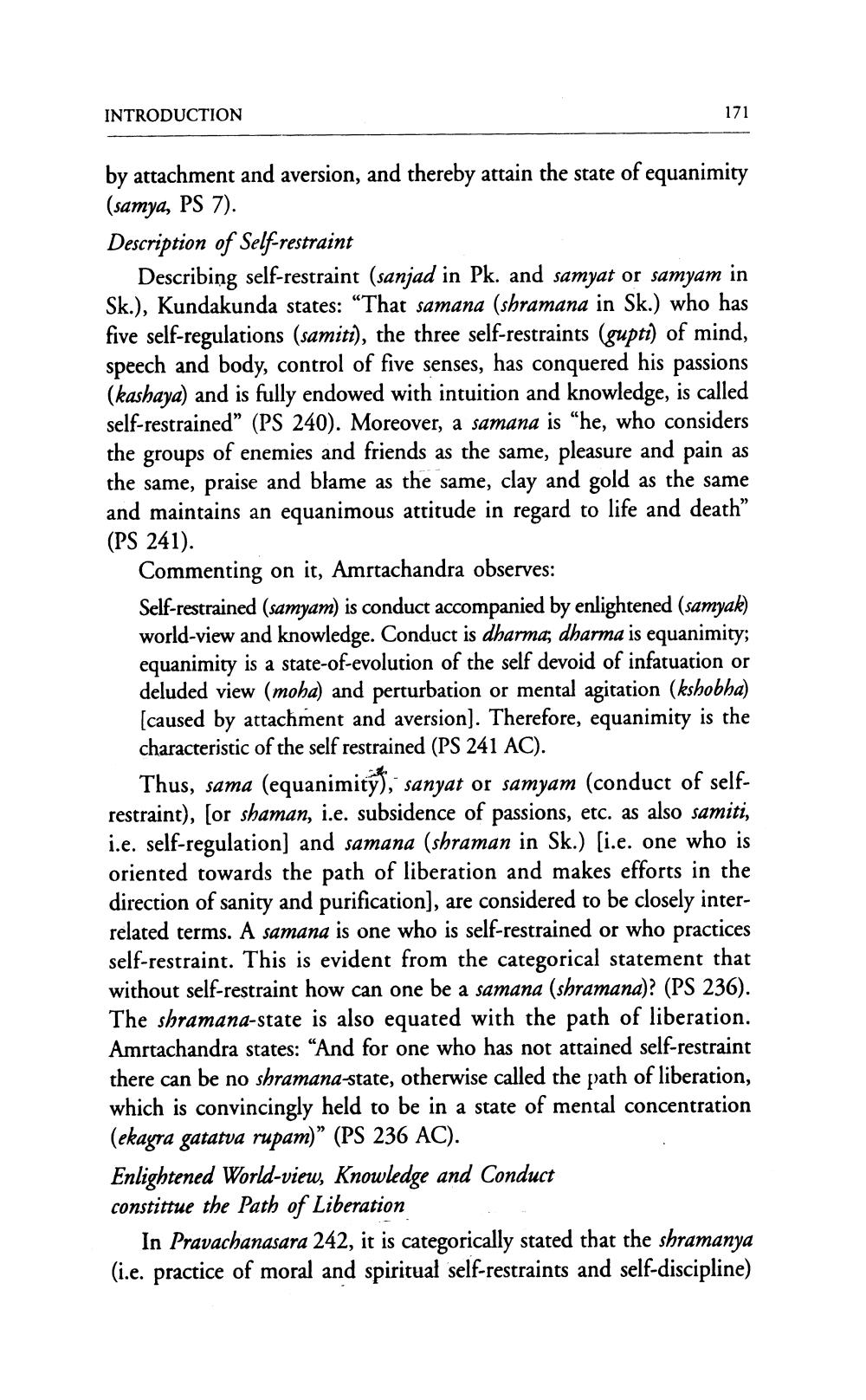________________
INTRODUCTION
171
by attachment and aversion, and thereby attain the state of equanimity (samya, PS 7). Description of Self-restraint
Describing self-restraint (sanjad in Pk. and samyat or samyam in Sk.), Kundakunda states: “That samana (shramana in Sk.) who has five self-regulations (samiti), the three self-restraints (gupti) of mind, speech and body, control of five senses, has conquered his passions (kashaya) and is fully endowed with intuition and knowledge, is called self-restrained” (PS 240). Moreover, a samana is “he, who considers the groups of enemies and friends as the same, pleasure and pain as the same, praise and blame as the same, clay and gold as the same and maintains an equanimous attitude in regard to life and death” (PS 241).
Commenting on it, Amrtachandra observes: Self-restrained (samyam) is conduct accompanied by enlightened (samyak) world-view and knowledge. Conduct is dharma, dharma is equanimity; equanimity is a state-of-evolution of the self devoid of infatuation or deluded view (moha) and perturbation or mental agitation (kshobha) (caused by attachment and aversion). Therefore, equanimity is the characteristic of the self restrained (PS 241 AC).
Thus, sama (equanimity), sanyat or samyam (conduct of selfrestraint), (or shaman, i.e. subsidence of passions, etc. as also samiti, i.e. self-regulation) and samana (shraman in Sk.) [i.e. one who is oriented towards the path of liberation and makes efforts in the direction of sanity and purification), are considered to be closely interrelated terms. A samana is one who is self-restrained or who practices self-restraint. This is evident from the categorical statement that without self-restraint how can one be a samana (shramana)? (PS 236). The shramana-state is also equated with the path of liberation. Amrtachandra states: “And for one who has not attained self-restraint there can be no shramana-state, otherwise called the path of liberation, which is convincingly held to be in a state of mental concentration (ekagra gatatva rupam)” (PS 236 AC). Enlightened World-view, Knowledge and Conduct constittue the Path of Liberation
In Pravachanasara 242, it is categorically stated that the shramanya (i.e. practice of moral and spiritual self-restraints and self-discipline)




